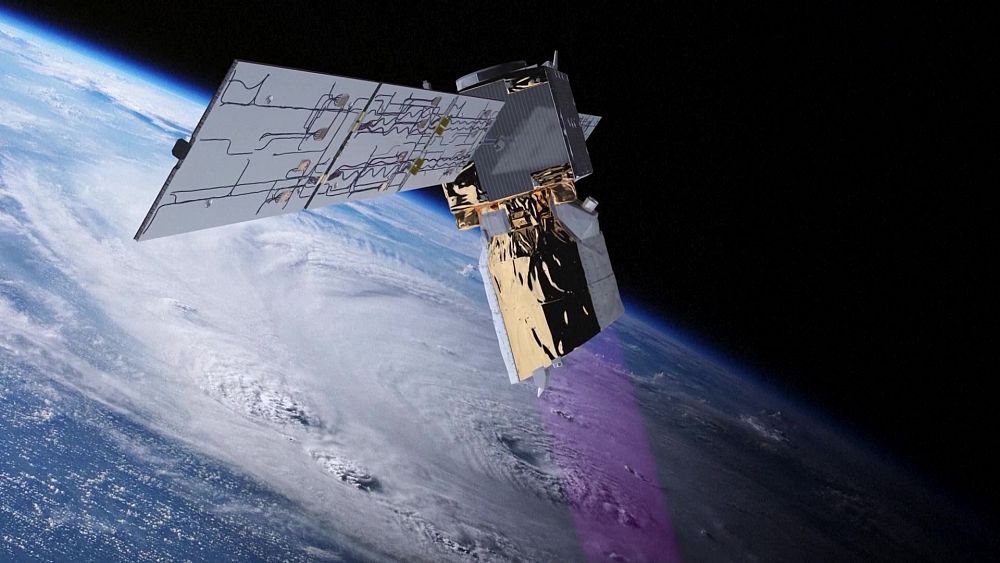
The European Space Agency (ESA) estimates there are 2,000 defunct spacecraft among a total of 10,000 spacecraft currently in space, a majority of which enter the Earth’s atmosphere in a natural – rather than controlled – way.
It has well outlived its designed life in orbit, with its instrument Aladin having beamed down seven billion pulses of UV light to profile Earth’s wind.
Despite its original purpose as a research mission to test novel technology, Aeolus has been so successful that for most of its five-year life in orbit, it provided data to Europe’s leading meteorology centres and contributed to significantly improving global weather forecasts.
Now, with its fuel almost spent and the mission over, the European Space Agency (ESA) will bring Aeolus back to Earth in what they are calling the “first of its kind” assisted re-entry.
Satellites nowadays are made to burn up entirely or undergo a controlled re-entry following the end of their mission.
But Aeolus wasn’t designed for a controlled re-entry as the satellite was planned and made in the late 1990s before the current regulations were set.
ESA wants to further reduce the minimal risk of harming humans or infrastructure in order to “set an example” amid an increasing amount of space debris.
“At ESA, we’re convinced that this is the responsible way to act. We want to demonstrate if it works, or at least that something can attempt to be done to reduce an already very small risk of it harming anybody or anything,” said Isabel Rojo, ESA’s Aeolus Operations Director.
She added that cleaning up the growing space debris orbiting above our heads is one of the main focuses of ESA right now.
“Access to space is very big now, it’s very open. There are a lot of constellations being launched and a lot of satellites up there.
“And if we don’t act in this sustainable and responsible way, this is something that could get very quickly, get out of control. So every agency, and every company that has access to space should act responsibly. And this is what we’re trying to do, to set an example and not just with words, but with actions,” Rojo explained.
Aeolus has operated at an altitude of 360 kilometres at the end of its mission and is currently falling back to Earth around 1 kilometre a day, with its descent accelerating.
Once it reaches an altitude of 280 kilometres on Monday 24 July, ESA controllers will send the satellite a series of commands to manoeuvre its re-entry into Earth’s atmosphere.
From there, the controllers will bring the spacecraft down gradually over four stages.
“We’re lowering its altitude to 250 kilometres and then even further to 150 and then 120. So clearly, we are pushing the boundaries of what the spacecraft was designed to endure,” said Rojo.
The space agency expects at around 80 kilometres, most of it will burn up in the atmosphere.
But some – 20 per cent or less, ESA experts say – will survive re-entry and land into a corridor of the Atlantic Ocean on Friday 28 July, the space agency said.
“We are confident we can succeed with this pioneering effort that will set a new standard for space safety and sustainability now and in the future,” said ESA’s Aeolus Mission Manager, Tommaso Parrinello, in a statement.
From 2030, every spacecraft ESA develops will be “debris neutral”, meaning they will clear their precious Earth orbit once the mission is complete.
For more on this story, watch the video in the media player above.